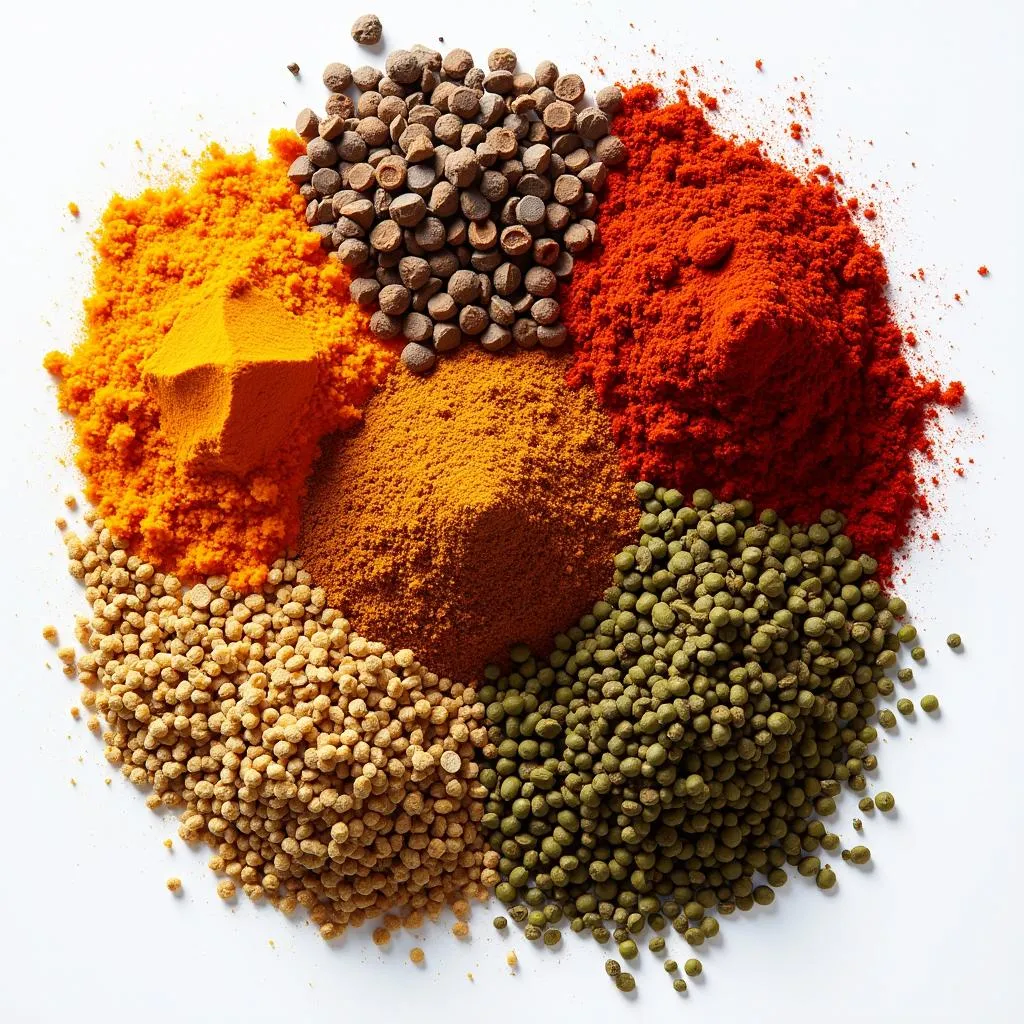African Dishes and How to Prepare Them: A Delicious Journey Through Taste and Tradition
African cuisine is a vibrant tapestry of flavors, colors, and aromas, reflecting the diverse cultures and traditions of the continent. Each region boasts its own unique culinary repertoire, using local ingredients, time-honored recipes, and innovative cooking techniques. From savory stews to fragrant spices, African dishes offer a culinary adventure for every palate.
A World of Flavors: Exploring Regional Cuisine
Africa’s culinary landscape is as vast as its geography, with each region showcasing its own distinct flavors and cooking methods. Let’s embark on a culinary journey, exploring some of the most beloved and iconic dishes from different corners of the continent:
West Africa: A Feast of Flavorful Stews and Grains
West Africa is renowned for its hearty stews, rich in spices and protein.
Jollof Rice: A staple dish across West Africa, Jollof rice is a vibrant blend of rice, tomatoes, onions, and an array of spices. The secret lies in the rich tomato sauce, simmered to perfection.
Fufu: A starchy dough made from pounded yams, cassava, or plantains, fufu is a versatile accompaniment to stews, soups, and sauces. It’s typically eaten by hand, rolled into small balls and dipped into the flavorful dishes.
Groundnut Stew: This creamy and aromatic stew is a classic West African dish, with a base of peanuts, tomatoes, onions, and spices. It’s often served with fufu, rice, or plantains.
“As a West African, Jollof rice is more than just a dish; it’s a cultural icon,” says chef Abena Mensah. “The vibrant colors and savory flavors evoke memories of family gatherings and celebrations.”
East Africa: A Symphony of Spices and Herbs
East Africa boasts a culinary heritage influenced by Arab and Indian traditions, resulting in a unique blend of spices and aromatic herbs.
Ugali: This dense, maize flour porridge is a staple in East Africa, served as a base for stews and vegetables.
Nyama Choma: This flavorful grilled meat dish is a favorite in Kenya and Tanzania, with succulent cuts of beef, lamb, or chicken marinated in a blend of spices and grilled over charcoal.
Sambusa: These savory pastries are filled with spiced meat, vegetables, or lentils, and are a popular street food and snack.
“The aroma of Nyama Choma sizzling on the grill is a sensory experience that transports you to the heart of East Africa,” shares chef Omar Abdi, a renowned Kenyan chef. “The blend of spices and the smoky char add a distinct character to this dish.”
Southern Africa: A Fusion of Cultures and Flavors
Southern Africa’s cuisine reflects the unique blend of influences from various cultures, resulting in a diverse array of dishes.
Biltong: This dried and cured meat is a popular snack and delicacy in South Africa, Namibia, and Botswana.
Boerewors: This thick, spiced sausage is a South African icon, enjoyed in a variety of ways, from grilled to braised.
Pap: This creamy porridge made from maize flour is a staple in South Africa and other Southern African countries, and is served as a base for stews and vegetables.
“Southern African cuisine is a testament to the region’s rich history and cultural diversity,” notes chef Thandiwe Mkhize. “Dishes like Biltong and Boerewors have become synonymous with South African identity.”
Central Africa: A Culinary Paradise of Forest Flavors
Central Africa’s cuisine is characterized by its abundance of wild game, vegetables, and spices, influenced by its lush rainforest environment.
Fufu: This starchy dough, similar to the West African version, is also popular in Central Africa, made from plantains, cassava, or yams.
Mbemba: This peanut soup is a staple in many Central African countries, featuring a creamy base of peanuts, tomatoes, onions, and spices.
Ndole: This flavorful dish is made from leafy greens, often bitterleaf, and is cooked with palm oil, fish, or meat.
“Central African cuisine is a celebration of the bounty of the forest,” says chef Joseph Ngangue. “Dishes like Mbemba and Ndole showcase the unique flavors and ingredients that are indigenous to this region.”
Preparing African Dishes: A Culinary Adventure at Home
Bringing the flavors of Africa to your kitchen is easier than you might think. Here’s a step-by-step guide to preparing some popular African dishes:
1. Gather Your Ingredients:
Start by sourcing the key ingredients. Many supermarkets carry African spices, dried beans, and grains. Explore local African markets for a wider selection of fresh produce, herbs, and spices.
2. Master the Basics:
Familiarize yourself with basic African cooking techniques, such as simmering, grilling, and frying. Mastering these techniques will help you create authentic African dishes.
3. Explore the World of Spices:
African cuisine is rich in spices, adding depth and complexity to the flavors. Experiment with different spice blends, like berbere, suya, and ras el hanout, to discover your favorites.
4. Embrace Patience and Creativity:
African cooking often involves slow-cooking methods that allow the flavors to meld and develop. Don’t be afraid to experiment with different ingredients and techniques to create your own unique culinary creations.
5. Enjoy the Journey:
Preparing African dishes is a journey of discovery, exploring new flavors and traditions. Embrace the process, have fun, and enjoy the delicious results!
 A colorful blend of African spices used in various dishes
A colorful blend of African spices used in various dishes
FAQs:
1. What are some of the most popular African dishes?
Some of the most popular African dishes include Jollof rice, fufu, Nyama Choma, Ugali, Biltong, Boerewors, and Pap.
2. What are some essential African spices?
Essential African spices include berbere, suya, ras el hanout, ginger, garlic, turmeric, and cumin.
3. Where can I find African ingredients?
Many supermarkets carry African spices, dried beans, and grains. Explore local African markets for a wider selection of fresh produce, herbs, and spices.
4. What are some tips for preparing African dishes?
Embrace slow-cooking methods, experiment with different spice blends, and don’t be afraid to get creative with your ingredients.
5. Are there any specific dietary considerations in African cuisine?
African cuisine is diverse, with dishes that cater to various dietary needs. Many dishes are vegetarian, while others include meat, fish, and poultry. It’s important to research specific dishes and their ingredients to ensure they align with your dietary preferences.
6. What are some resources for learning more about African cuisine?
There are many resources available online, including websites, cookbooks, and videos. You can also explore local African restaurants and communities to experience authentic African cuisine.
Embrace the flavors of Africa and embark on your culinary adventure!


